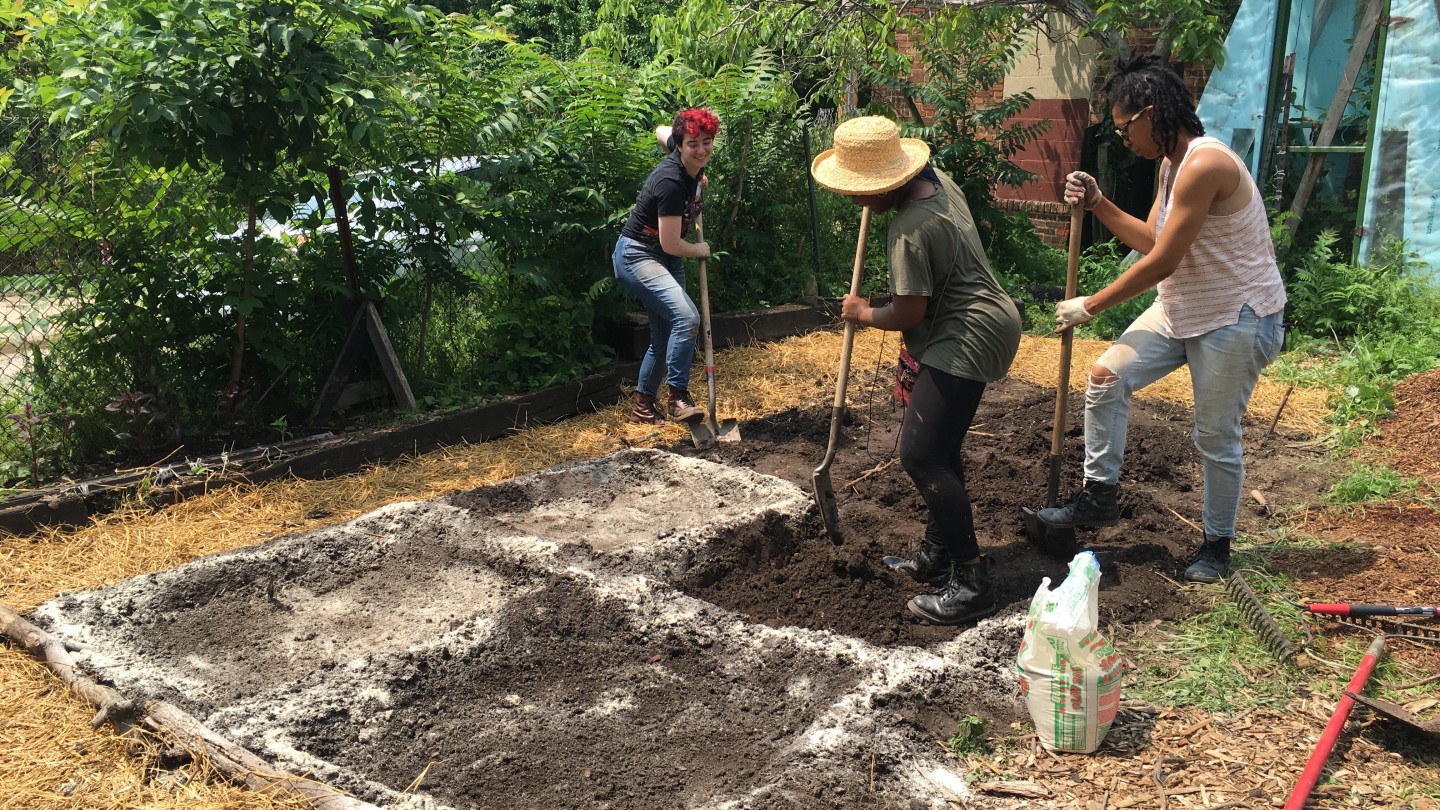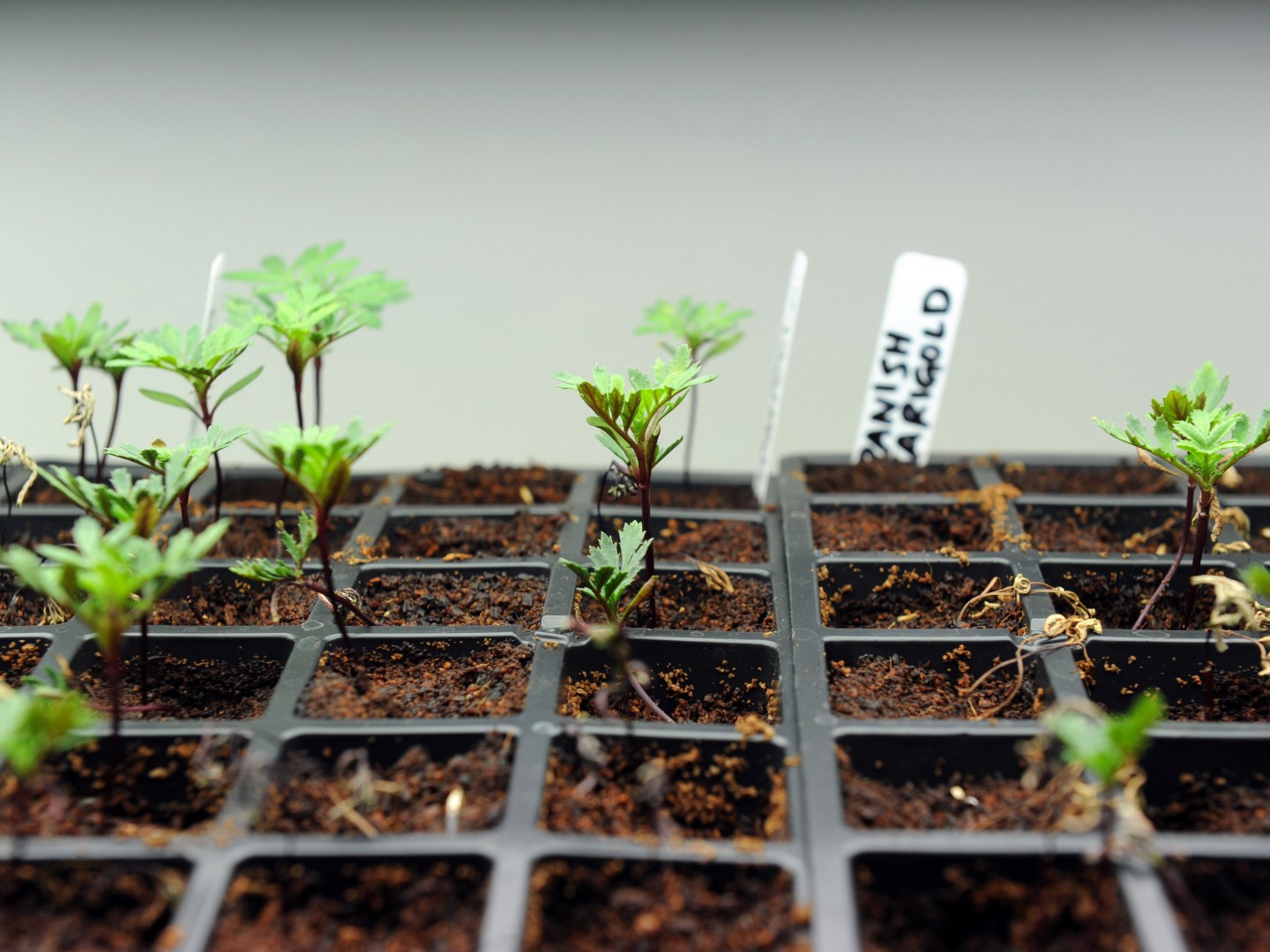Learning about the cultivation, harvesting, and processing of natural dyes is central to the Baltimore Natural Dye Initiative. The project thus engages farmers in growing natural dye plants on two urban farms in Baltimore: at the Parks and People Foundation, an organization located near Druid Hill Park that is dedicated to improving the quality of life for residents of the city by ensuring that everyone is connected to nature through vibrant parks and green spaces, and at Hidden Harvest, a cooperatively run farm in the Greenmount West neighborhood.

The farmers working at these sites are Sun (Bobby) English, Jr. and Kenya Miles at Parks and People, and Rosa Chang and Kenya Miles at Hidden Harvest. All three are active as artists with the project as well. Read more about these individuals here.
The main crops being grown at Parks and People Foundation include Asian and tropical indigo, Black-Eyed Susan, woad, marigold, safflower and madder. Members of the Branches program, a paid-internship program for Baltimore city youth, are involved in working with the natural dye farm at Parks and People.


In addition to classic dye plants, the crops being grown at the Hidden Harvest farm also include plants that are native to this bioregion, that were traditionally used in ritual and ceremony, that have medicinal properties and serve as an important conduit to the past. Some varieties of cotton, for example, were chosen by the farmers because they recognized that the garden would become a site for community gatherings and learning, and offer spaces for healing and forging new relationships with plants that are connected to challenging histories in the Americas and other regions affected by colonization.
MICA students and community collaborators affiliated with the project have the opportunity to volunteer at the farm sites, learn about the cultivation of the dye plants, and participate in harvesting and processing.

